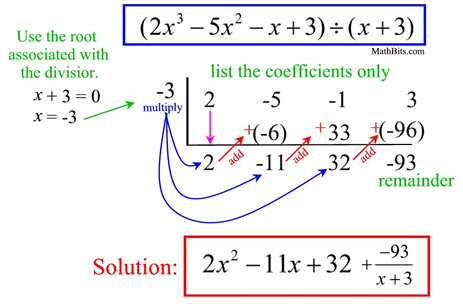Exploration: Understand the effects of the coefficients of a cubic function in order to sketch them more accurately.
Definition:
 A cubic function is defined as a function whose highest x power is 3, generally in the form of y=ax3+bx2+cx+d. The parent function is simply y=x3. The image to the right shows what the parent function looks like for -2 ≤ x ≤ 2.
A cubic function is defined as a function whose highest x power is 3, generally in the form of y=ax3+bx2+cx+d. The parent function is simply y=x3. The image to the right shows what the parent function looks like for -2 ≤ x ≤ 2.Parameters a and d:
For any function, the constant term (d) is a translation upwards or downwards, depending on the value of that constant. This graph should be no exception. Should this graph only consist of y=x3+d, the zero will be at the cube root of -d, with a multiplicity of 3. Next, I'm going to take a look at the a coefficient, since that's attributed with the x3.
Desmos has a great addition, where you can create a coefficient, and animate it. This makes it so we can see the effects in real-time. The video to the right uses this animation tool to show the effect of changing a when every other value is 0. The only thing really affected is the vertical stretch of this graph, as well as the reflection across the x-axis. [Note, if there is a video, I highly recommend you open the link to see the video on a larger portion of your window.]
Parameter b:
A cubic doesn't just have an x raised to the third power. A cubic also holds an x raised to the second power, and a linear term. With this logic, we can potentially apply that to how they affect a cubic function.
Stationary Point (1):
There seems to be a pattern, however, between the stationary points and the values of b and a. In a quadratic, we called this the Axis of Symmetry, and that would give us the x value of the vertex. It was found by the following equation: x=-b/(2a). Or using the terms we defined here, x=-c/(2b). I believe the x value of the vertex would be found in a similar way. Assuming this is going to be the product of a negative with a fraction, the best point to test is when the values are the smallest integer possible. In this case, I'm trying to create a stationary point in the first or fourth quadrants of the graph. By setting a=1 and b=-1, I have created a stationary point at (0.667, -0.148). This is great, because it already shows me what the relationship is. According to what I found, when c=0, it is safe to assume the stationary point will be at x = -(2b)/(3a).
Parameter c:
Next, we have the c parameter to look at. Looking at the graph of y=x3+cx, the first thing I noticed is the fact the graph becomes more wavy when c < 0, and it becomes more linear as c > 0. However, this pattern is reversed if a becomes negative.
At this point, I'm going to do the same thing to this parameter as I did for the b parameter, which is comparing this graph to the linear graph of y=cx. The video includes every parameter, however, in order to see if c depends on other variables.
Stationary Point (2):
Through watching each parameter working together, my initial reaction to the stationary point is actually off. The d parameter has no effect on the stationary points. However, the parameter c has some small effect. The stationary point does not exist when c and a have the same signs, though the stationary point seems to change as c changes as well. I have set a=1 and b=-1 again in order to find the stationary point again, and have manipulated c in order to reach an integer value for the x-coordinate of the point. In this case, setting c=-1 gives me an x coordinate of 1. Setting c=-8 also gives me an x coordinate of 2.
-{So I did a bit of research because nothing seems to be working, and I need Calculus to do this.}-
The tangent of the stationary points, by definition, is 0. What I need to do is take the derivative of the equation y=x3-x2-4x-5 and find the point where slope is 0.
A quick explanation of derivatives:
y=axn (Original)
y'=anxn-1 (First Derivative)
Although I don't quite understand why, this is the gist of what you need to know for this.
So the derivative of x3-x2-4x-5 is 3x2-2x-4.
Now, we solve 3x2-2x-4 for 0. This gives us the x coordinate of our stationary points, where the slope is 0. Then we plug that value in for x in our our original equation, and we get the y values of those stationary points. The fact our parameter d doesn't change the x values of the stationary point makes sense, as the derivative of a constant is 0. (Therefore, the anti-derivative of 3x2-2x-4 is x3-x2-4x+C, where C is literally constant.)
Zeros of Cubics:
The zeros of a cubic are actually pretty simple to find. As long as we have the equation of the line, we can use the Factor Theorem, which states a polynomial has a factor of x-a if P(a)=0. We can also use the Rational Roots Theorem, which states every rational zero of the polynomial can be written as p/q, where p is the factor of the constant term, and q is the leading coefficient. Alternatively, we can use Synthetic Division to test/find factors. This is described below. The diagram below was found on mathbitsnotebook.com .

Since this can just be done in a "guess-and-check" technique, one might as well just plug in a value into the function to find a 0.
Point of Inflection:
To find the point of Inflection, we need to find the first derivative. The graph x3-x2-4x-5 has the derivative 3x2-2x-4 . The point of inflection is found at the vertex of the derivative - Or at least the x value is. Once you have the x value, plug that into the cubic and solve. In this case, the vertex of the quadratic is (0.333, -4.333). Plugging 0.333 in for the original equation, we get the point of inflection to be at (0.333, 3.593).
Conclusion:
To conclude, all the parameters in y=ax3+bx2+cx+d work together to create all sorts of graphs, using different patterns such as the tangent lines. Creating a graph from an equation is simple, as long as we use those patterns. Using everything we learned about before, we can find the equation from the graph, as long as we're given the points. All we have to do is the opposite of what this exploration has shown.



